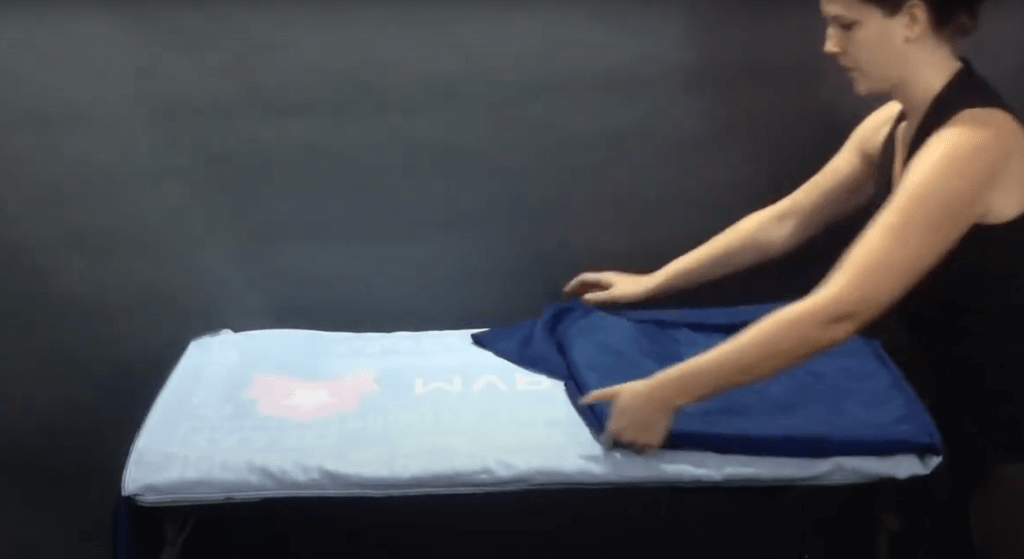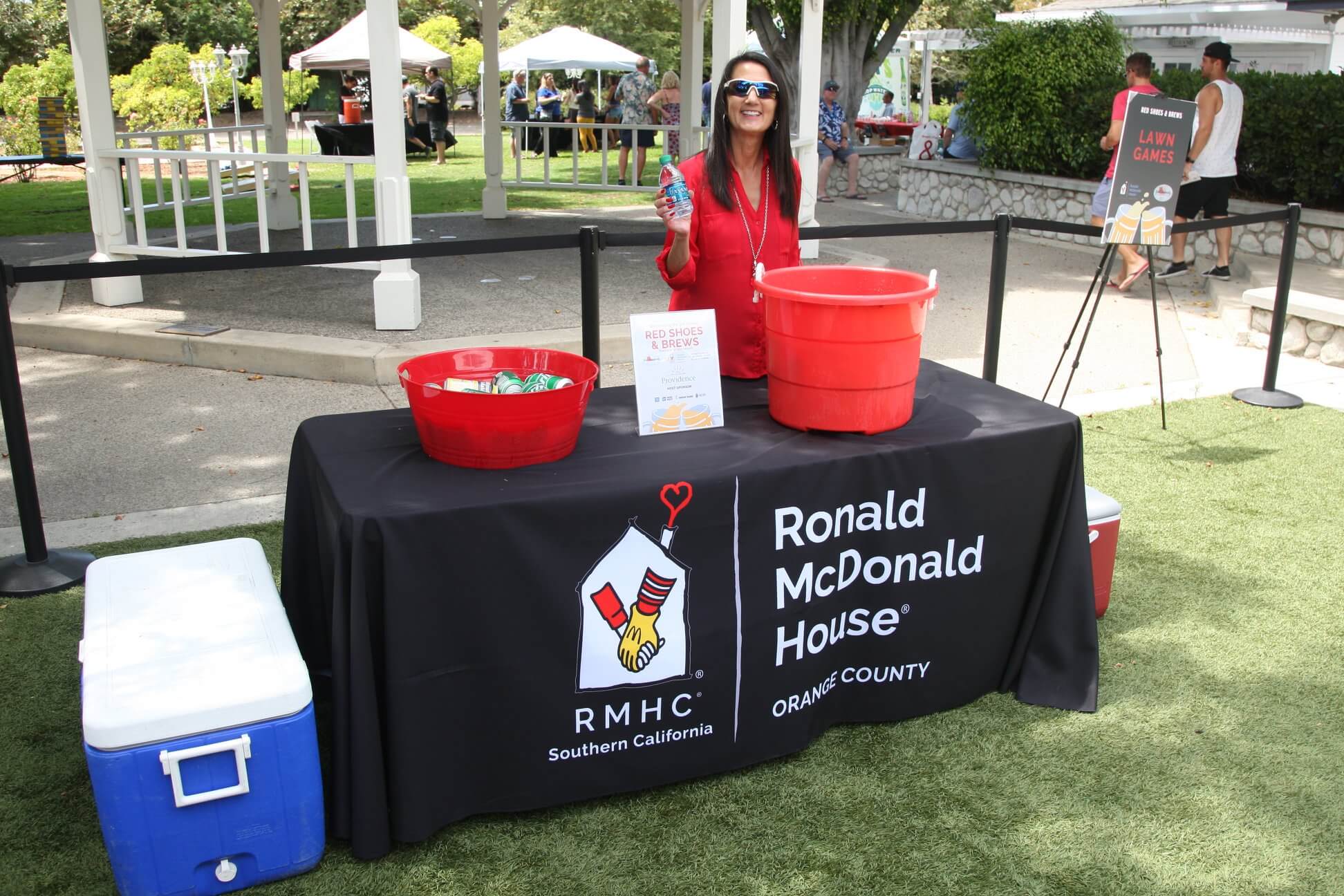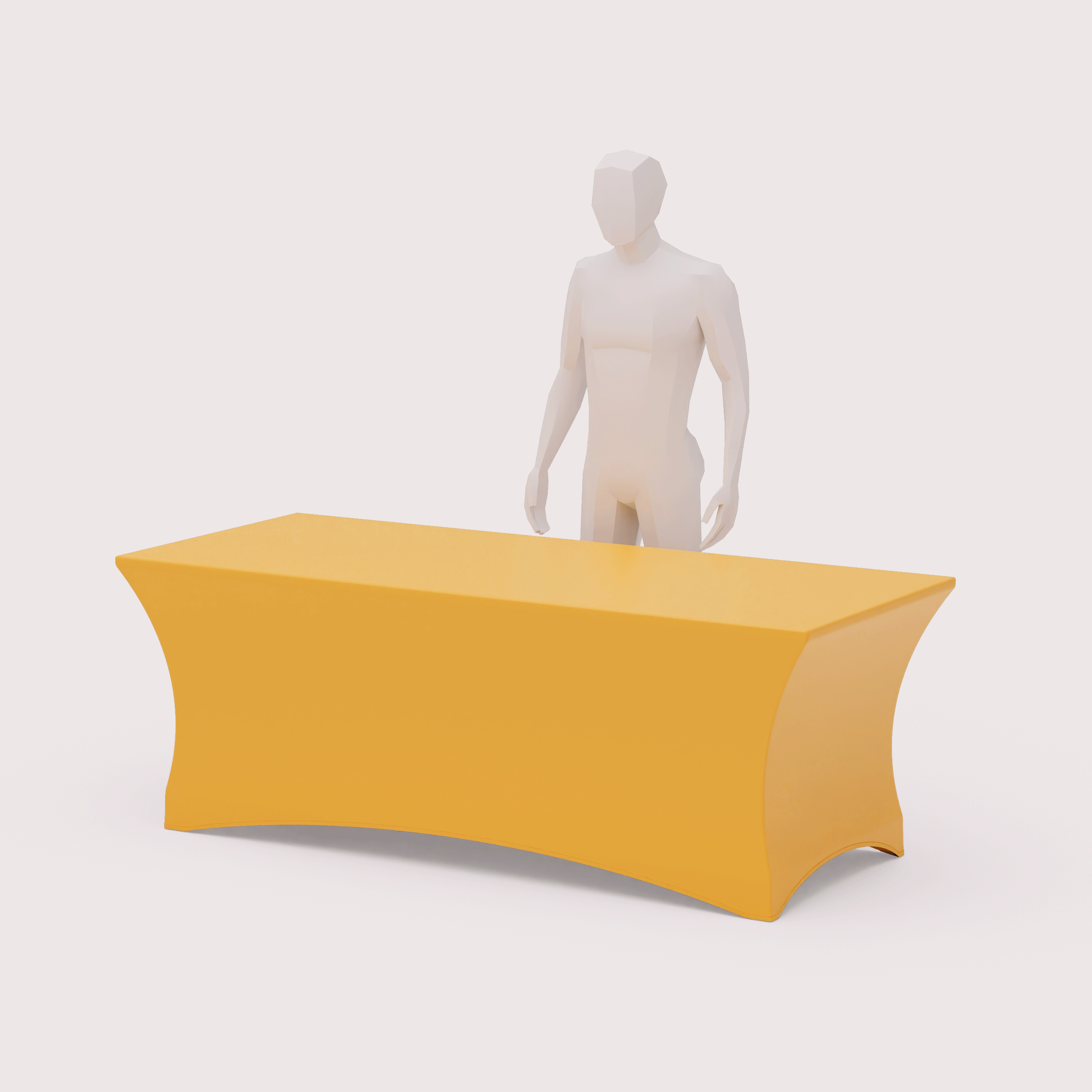It's the day of your big event.
The air is alive with the buzz of conversation and the gentle stir of movement, creating a palpable excitement.
In the midst of this lively atmosphere, your booth stands as a beacon of your hard work and meticulous preparation. Each product is thoughtfully arranged, bathed in a welcoming glow, setting the stage for what's almost a perfect showcase.
But, there's a snag – like a bad hair day, your tablecloth, the foundation of your display, is showing signs of distress with its unsightly wrinkles and creases, as if it completely missed the memo on needing to look sharp.
Had you known the secrets to transporting custom tablecloths without wrinkling them, this little misstep could have been avoided, ensuring every detail of your booth was picture-perfect.
Say goodbye to the worries of wrinkled tablecloths.
Our guide, featuring the Seam-Aligned Rolling Method and the Hanging Method, along with pro tips for maintaining smooth tablecloths, is your answer for achieving a flawless presentation at any event.
Method 1: Seam-Aligned Rolling Method by MVP Visuals
The Seam-Aligned Rolling Method, as demonstrated by MVP Visuals, offers a simple yet effective way to fold and roll tablecloths, keeping them free from wrinkles during transport. This approach guarantees that your branded table cover will arrive looking great and ready to use at your event.
Step 1: Preparation

- 1. Lay It Out and Prep: Start by spreading your tablecloth on a big, clean surface, such as a table or bed. Iron or steam the tablecloth first to get rid of any wrinkles. This is an important step to create a smooth foundation, which helps make the rolling method more effective.
Step 2: Fold in Thirds Along Horizontal Seams

-
2. Back Panel First: Begin by folding the back section of the tablecloth inward towards the middle, lining it up with the horizontal seams. This fold should neatly cover the top part of the panel, creating an even layer.
-
2b. (Optional) Layer With Tissue Paper: Layer With Tissue Paper: Place sheets of tissue paper on the folded back section. Continue adding tissue paper between each layer as you fold the front and side panels in the next steps.
Using tissue paper between the folds is a smart way to prevent wrinkles. It reduces rubbing between the layers of fabric, keeps the folds neat and structured, and spreads out any pressure to stop creases from forming. Tissue paper also soaks up extra moisture, keeping the fabric dry and less likely to wrinkle. It acts like a cushion during transport, protecting against bumps and knocks.
For the best outcome, make sure the tissue paper fully covers each folded area. This provides complete protection and helps keep your tablecloth smooth and free of wrinkles.
Step 3: Repeat with the Front Panel

-
3. Front Panel Folding: Next, fold the front part of the tablecloth over the already folded back section. Make sure it lines up with the seams, reflecting the same fold you did on the back.
- 4. Smooth and Align: As you fold, use your hands to smooth out any wrinkles or bunches. This step is key to making sure the surface is flat and even, which is really important for avoiding any creases."
Step 4: Fold the Side Panels

- 5. Side Panels Up: Now, fold the side sections of the tablecloth upward, placing them over the folds you made in the front and back.
- 6. Neat Edges: Ensure that the edges of these side panels are lined up and smoothed out. Your goal is to create a surface that's uniform and flat.
Step 5: Roll Along the Top of the Table

- 7. Start Rolling: Begin at one end and carefully roll the folded tablecloth along the table's length. Roll it firmly to avoid wrinkles, but be careful not to roll it so tightly that it forms new creases.
- 8. Mind the Seams: As you roll, keep an eye on the seams. It's important to keep these lines straight and free of creases to ensure your tablecloth looks perfect when you unroll it later.
Method 2: The Hanging Method for Wrinkle-Free Tablecloths Transportation
This method is great for delicate or detailed tablecloths that might get damaged by folding. It lets the custom logo tablecloth hang freely, avoiding creases, and is perfect for keeping more fragile fabrics and designs in top shape during travel.
- Lay and Inspect the Tablecloth: Spread your tablecloth on a large, clean surface. This gives you the chance to check for any stains or wrinkles. Make sure you have enough space for the whole tablecloth.
- Iron or Steam for Smoothness (Optional): If you see any wrinkles, lightly iron or steam the tablecloth. This is important for getting a smooth finish, especially for easily creased fabrics. Be sure to use the right settings for the fabric.
- Select and Prepare Hangers: Pick strong, wide hangers that can carry the tablecloth's weight without bending. Padded hangers are a good choice because they provide extra support and won't leave marks on the fabric. Have enough hangers to support the whole tablecloth without it touching the ground.
- Drape the Tablecloth Carefully: Hang the tablecloth on the hanger, balancing its weight evenly. If it's big or heavy, use several hangers, spaced out to keep the fabric's shape and avoid drooping. The tablecloth should not touch the ground to keep it clean and undamaged.
- Cover with a Garment Bag for Protection (Optional): Once it's hung, put the tablecloth in a garment bag to protect it from dust, dirt, and moisture while you move it. This is really useful for long trips or when you can't control the environment as much.
- Secure and Transport with Care: Move the hanging tablecloth in a vehicle with a hanging hook, or use a portable rack. Make sure it hangs without being squeezed or pushed against other items, as this could cause wrinkles.
- Final Inspection and Touch-Up Upon Arrival: When you get to where you're going, give the tablecloth one last check. If you spot any small wrinkles, a handheld steamer can quickly fix them. This makes sure your tablecloth looks perfect and ready for your display.
6 Pro Tips for Wrinkle-Free Tablecloth Transport

- Wrinkle-Resistant Fabrics: Pick the right material. Wrinkle-resistant fabrics like polyester stay smooth longer. Their synthetic fibers don't wrinkle as easily as natural ones.
- Use Anti-Wrinkle Sprays: A bit of anti-wrinkle spray can do wonders, especially for small creases. These sprays relax the fabric fibers, helping to smooth out wrinkles when you stretch or gently press the fabric.
- Portable Steamers - Your Wrinkle Solution: Handheld steamers are incredibly useful. They're easy to bring along and great for quick fixes. Just be careful with heat-sensitive or delicate fabrics like silk or velvet, and keep the steamer moving to prevent marks.
- Ironing for a Flawless Look: A well-ironed tablecloth can look amazing. Learn how to iron different fabrics for the best results. Be careful with delicate materials and those with decorations - too much heat can ruin them. Always follow the fabric care instructions.
- Unroll Upon Arrival: As soon as you get there, unroll your tablecloths. This stops any temporary folds from setting in.
- Smart Storage Solutions: Store your tablecloths right before you move them. Keep them in a cool, dry place and fold or hang them carefully. This helps them stay wrinkle-free while they travel.
The Art of the Wrinkle-Free Table Covers
Now you have the secret to wrinkle-free tablecloths, ensuring a display free from any creases or folds that could spoil your presentation.
Follow our Seam-Aligned Rolling or Hanging Methods, and say goodbye to wrinkled tablecloths that ruin your display’s professionalism. Your table covers will now be smooth and pristine, enhancing the overall look of your booth with a flawless, crease-free appearance.





